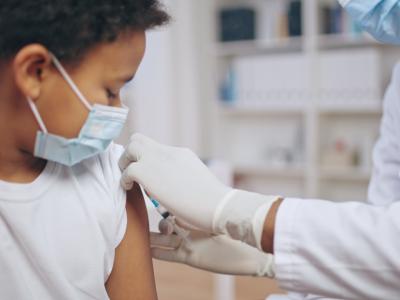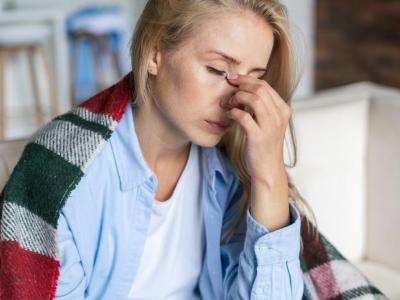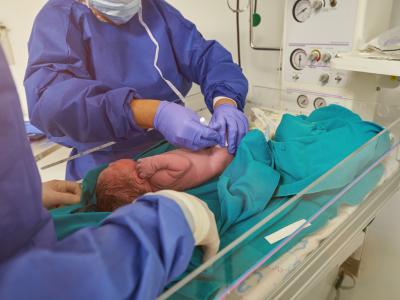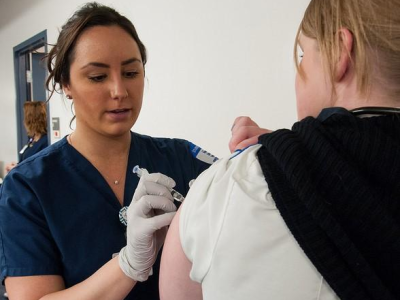Two inactivated Chinese COVID-19 vaccines found 73% to 78% effective
A randomized controlled trial of two inactivated (vero cell) COVID-19 vaccines made in China finds a vaccine efficacy of 73% in one and 78% in the other, according to a study yesterday in JAMA.
The whole-virus inactivated vaccines were developed with strains of the virus taken from patients in Wuhan, China.
The phase 3 trial included approximately 40,000 adults in the United Arab Emirates and Bahrain who were assigned to receive either a vaccine (WIV04 or HB02) or an alum-only injection. Both vaccines are two-dose inactivated injections, and the primary end point of the trial was symptomatic COVID-19 at least 14 days after the second injection.
During a median follow-up of 77 days, symptomatic COVID-19 was identified in 26 participants in the WIV04 group (12.1 cases per 1,000 person-years; 95% confidence interval [CI], 8.3 to 17.8]), 21 in the HB02 group (9.8 per 1,000 person-years; 95% CI, 6.4-15.0), and 95 in the alum-only group (44.7 per 1,000 person-years; 95% CI, 36.6-54.6), the authors wrote. This resulted in efficacy rates of 72.8% and 78.1%, respectively against symptomatic COVID-19 cases.
Mild adverse events were described in 44.2% of participants in the WIV04 group and 41.7% in the HB02 group and included pain at the injection site and headache.
Neither vaccine was tested against emerging variant strains of COVID-19, the authors warned. The authors also said that, compared with trails of mRNA and adenovirus-based vaccines, trial participants were younger (median age 36.1 years), and mostly male (84.4%).
"In this prespecified interim analysis of a randomized clinical trial, treatment of adults with either of 2 inactivated SARS-CoV-2 vaccines significantly reduced the risk of symptomatic COVID-19. Data collection for the final analysis is pending," the authors concluded.
May 26 JAMA study
Review finds persistent symptoms in 73% of COVID-19 patients
Almost three quarters of patients reported at least one persisting COVID-19 symptom during follow-up, with the most common being shortness of breath and fatigue, according to a literature review published in JAMA Network Open yesterday.
The researchers looked at 45 studies published from Jan 1, 2020, to Mar 11, 2021, and defined long-haul COVID as either 60 days after diagnosis, symptom onset, or hospitalization, or at least 30 days after acute illness recovery or hospital discharge. The largest proportion of studies came from China (7), followed by the United Kingdom (6), Spain (6), Italy (5), France (4), and the United States (3).
The total cohort was 9,751 inpatients and outpatients, and 30 studies involved patients with mean or median ages younger than 60. Among all patients, 54.0% were male.
In 16 studies, mostly of previously hospitalized patients, a median 72.5% had at least one persisting COVID-19 symptom during follow-up, even through 6 months. Of the most prevalent symptoms, a median of 40.0% of participants reported fatigue in 25 studies, 36.0% reported shortness of breath in 26 studies, and 29.4% reported sleep disorders in 8 studies. A total of 84 signs or symptoms and 19 lab or imaging measurements were looked at across the study pool, but the researchers note that the studies had limited comparability.
The researchers conclude, "This systematic review found that COVID-19 symptoms commonly persisted beyond the acute phase of infection, with implications for health-associated functioning and quality of life; however, methodological improvements are needed to reliably quantify these risks."
May 26 JAMA Netw Open study
State COVID-19 vaccine websites found wanting in accessibility, usability
Many state-run COVID-19 vaccine websites could improve their accessibility and usability, according to a research letter yesterday in JAMA Network Open.
The researchers conducted a qualitative study on each state's website for COVID-19 vaccine information and looked at accessibility and usability from the standpoint of someone who was trying to understand vaccine eligibility, wanting to schedule an appointment online, or needing to be added to a wait list.
The average website accessibility was 82%. Seven websites weren't available to view completely via smartphone, and nine were only in the English language. Not all states included vaccine eligibility information on their sites. Of the 47 that had a median readability of 15.6 out of 100 (the lower score, the more readable), 39 (83.0%) were rated at a post–high school reading level.
Regarding usability, the researchers found that 40 of the 47 states with vaccine eligibility information had no indicator of when the information was last updated, and 27 (57.4% of 47) did not support methods to verify eligibility.
Half of all states provided web-based appointment scheduling, but 23 required people to search vaccine locations one by one. Only three states offered wait-list or follow-up options, and nine states did not offer web-based scheduling or follow-up at all.
"State health department COVID-19 vaccine website accessibility and usability challenges create frustration, may promote health disparities, and contribute to overall ineffective and inequitable distribution," the researchers write.
May 26 JAMA Netw Open study










